What You Should Know About The Guide to Mexican Cuisine
The Rich Diversity and Global Significance in a Complete Guide to Mexican Cuisine
Mexican cuisine stands as one of the world’s most diverse and cherished culinary traditions, representing centuries of cultural evolution, indigenous wisdom, and colonial influences. This comprehensive Guide to Mexican Cuisine will take you through its rich history, essential ingredients, traditional cooking techniques, and the profound cultural significance that has earned it recognition as a UNESCO-designated culinary heritage.
The Roots of Mexican Culinary Heritage
The story of Mexican cuisine is deeply intertwined with the nation’s history, stretching back to ancient Mesoamerican civilizations. In 2010, UNESCO recognized traditional Mexican cuisine as an Intangible Cultural Heritage of Humanity, acknowledging its crucial role in maintaining cultural identity. Any comprehensive Guide to Mexican Cuisine would highlight this recognition as a testament to the profound impact Mexican food has had not only on global gastronomy but also on social customs and cultural celebrations.
Mexican Cuisine as a Cultural Evolution
Mexican cuisine serves as a living museum of the country’s history, with each dish telling stories of cultural exchange, adaptation, and innovation. From the ancient Maya and Aztec civilizations to Spanish colonial influence and modern fusion techniques, Mexican food continues to evolve while maintaining its essential character and traditions. Exploring this rich journey of flavors, resilience, and culinary creativity is a key part of any well-rounded Guide to Mexican Cuisine.
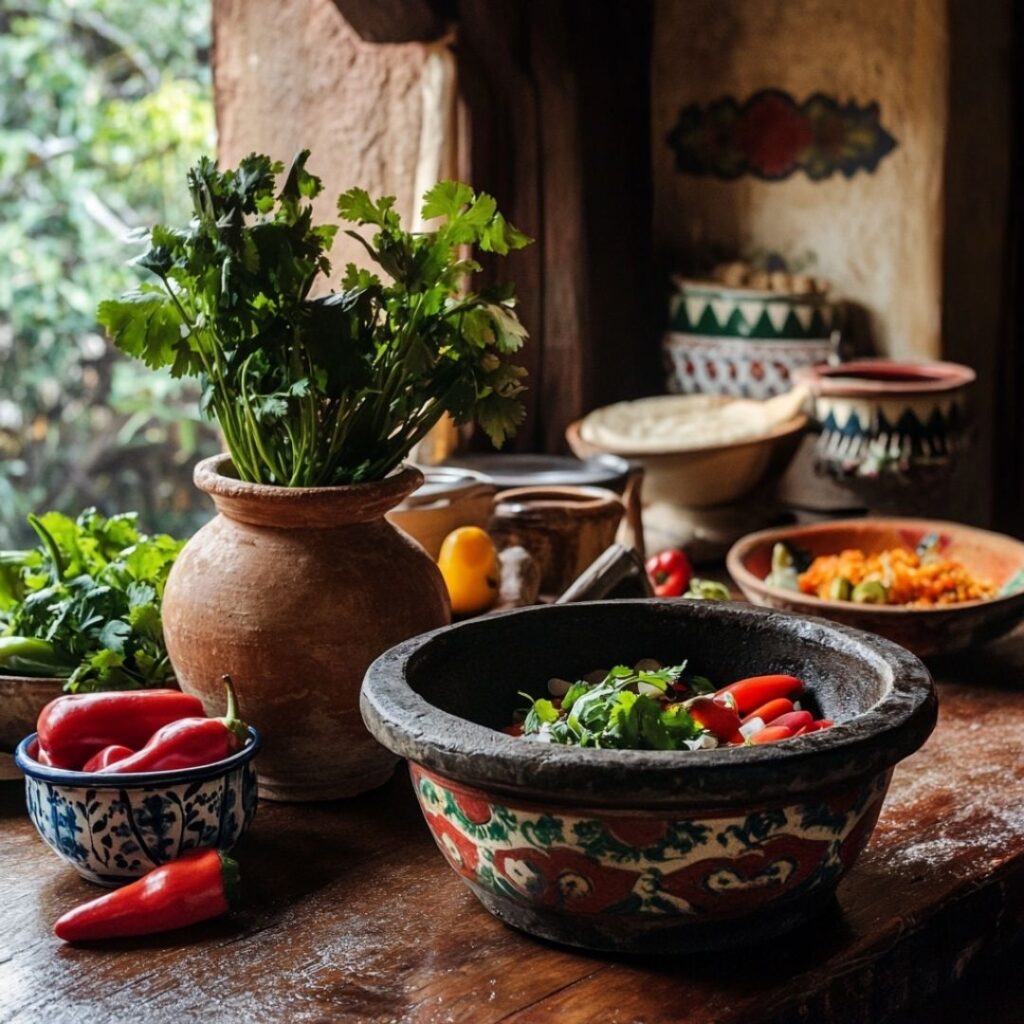
The Ultimate Guide to Mexican Cuisine
Essential Ingredients and Foundations
At the heart of Mexican cuisine lies a sophisticated understanding of ingredients that have been cultivated and refined over millennia. Corn, the cornerstone of Mexican cooking, has been grown in Mexico for over 10,000 years. The process of nixtamalization, which involves treating corn with lime to enhance its nutritional value and workability, reflects the ancient wisdom embedded in Mexican culinary practices.
Beyond corn, Mexican cuisine relies heavily on beans, chiles, and tomatoes. Each region of Mexico has developed its own preferences for specific varieties of these ingredients, resulting in distinct regional flavors and preparations. Herbs and spices play a crucial role, with cilantro, epazote, Mexican oregano, and cumin featured prominently in many dishes. Understanding the importance of these core ingredients and the regional diversity they create is essential in any detailed Guide to Mexican Cuisine, as it highlights what makes the nation’s culinary landscape so rich and varied.
Base Ingredients:
- Corn (maize)
- Beans
- Chile peppers
- Tomatoes
- Tomatillos
- Avocados
- Cacao
Herbs and Spices:
- Cilantro
- Epazote
- Mexican oregano
- Cumin
- Cinnamon
- Cloves
- Allspice
Regional Diversity in Mexican Cuisine
The geography and climate of Mexico have given rise to distinct regional cuisines, each with its own character and specialties. Northern Mexico, with its cattle ranching tradition, is known for its meat-based dishes and flour tortillas. The central region, including Mexico City and Puebla, is famous for complex moles and a vibrant street food culture. Coastal regions naturally emphasize seafood, while the tropical south incorporates unique indigenous ingredients and preparation methods. Understanding these regional distinctions is essential in any Guide to Mexican Cuisine, as they reveal how local environment and history shape the nation’s rich culinary diversity.
Any thorough Guide to Mexican Cuisine would highlight how this regional diversity shapes the country’s culinary identity. Even familiar dishes like tamales vary significantly from region to region, with different wrapping materials, fillings, and even shapes depending on local traditions and available ingredients.
Northern Mexico:
- Focus on meat dishes
- Flour tortillas
- Cheese-based dishes
- Burritos and grilled meats
Central Mexico:
- Mole varieties
- Barbacoa
- Street food culture
- Complex sauce preparations
Southern Mexico:
- Tropical fruit incorporation
- Seafood specialties
- Indigenous influences
- Chocolate-based dishes
Coastal Regions:
- Seafood-centric dishes
- Coconut-based preparations
- Fresh lime and citrus usage
Essential Components
Tortillas: The cornerstone of Mexican cuisine, tortillas are made from either corn or flour. Corn tortillas, dating back to ancient Mesoamerican civilizations, remain the most traditional choice. Their preparation involves nixtamalization, a process that improves corn’s nutritional value.
Salsas: Mexican cuisine features countless salsa varieties, each serving specific purposes.
- Salsa Roja (red sauce)
- Salsa Verde (green sauce)
- Pico de Gallo (fresh chopped salsa)
- Salsa Negra (black sauce)
Beans and Rice: These staples provide the foundation for many Mexican meals.
- Frijoles Refritos (refried beans)
- Frijoles de la Olla (pot beans)
- Arroz Rojo (red rice)
- Arroz Verde (green rice)
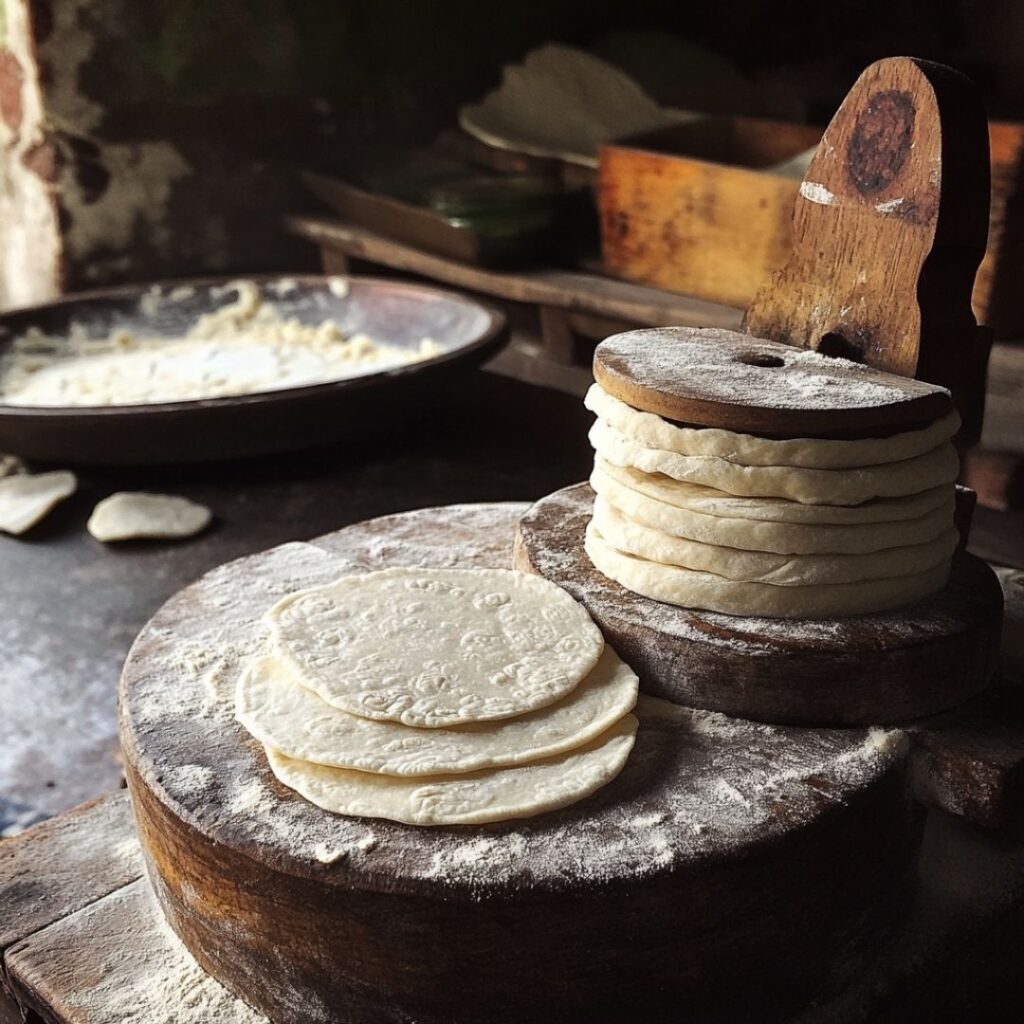
Popular Dishes
Mexican cuisine offers an incredible variety of dishes, each with its own history and cultural significance. If you want to understand this rich culinary tradition, a thorough Guide to Mexican Cuisine will introduce you to iconic dishes like tacos, perhaps Mexico’s most famous culinary export, which come in countless varieties from simple street food to elaborate restaurant preparations. Enchiladas with their pre-Hispanic origins showcase the art of tortilla based dishes, while tamales represent one of the oldest continuous culinary traditions in the Americas.
Tacos: From street food to gourmet preparations, tacos represent Mexican cuisine’s versatility.
- Al Pastor
- De Pescado
- De Carne Asada
- De Pollo
Mole: This complex sauce, considered Mexico’s national dish, comes in numerous varieties.
- Mole Poblano
- Mole Negro
- Mole Verde
- Mole Amarillo
Tamales: These steamed corn dough packages filled with various ingredients represent one of Mexico’s oldest dishes, dating back to ancient civilizations.
Cultural Influences
Mexican cuisine reflects various cultural influences:
Indigenous Heritage:
- Corn cultivation
- Chile pepper varieties
- Traditional cooking methods
- Native ingredients
Spanish Influence:
- Introduction of livestock
- Dairy products
- Wheat flour
- Spices from the Old World
Modern Fusion:
- Contemporary interpretations
- Global ingredient incorporation
- Technical innovations
- Health-conscious adaptations
Nutritional Aspects
Traditional Mexican cuisine offers significant nutritional benefits. The combination of corn and beans provides complete protein, while the extensive use of vegetables, herbs and spices delivers important vitamins, minerals, and antioxidants. The healthy fats found in avocados and the fiber-rich nature of many Mexican dishes contribute to a well-balanced diet. These healthful qualities are key reasons why traditional Mexican food remains both nourishing and flavorful, and any well-informed Guide to Mexican Cuisine would emphasize their importance.
Mexican cuisine offers numerous health benefits:
- High fiber content from beans and corn
- Healthy fats from avocados
- Antioxidants from chile peppers
- Protein variety from both animal and plant sources
- Essential vitamins and minerals from fresh ingredients
Traditional Preparation Methods
The preparation of Mexican food involves numerous traditional techniques that have been passed down through generations. The use of a molcajete (stone mortar and pestle) for grinding spices and making salsas, the nixtamalization of corn for tortillas, and the slow cooking of meats for barbacoa all represent important cultural knowledge that contributes to the authentic flavors of Mexican cuisine. A detailed Guide to Mexican Cuisine highlights these time-honored methods as essential to understanding the depth and richness of Mexico’s culinary heritage.
For those interested in preparing Mexican cuisine at home, understanding the basic techniques and having the right equipment is essential. A good Guide to Mexican Cuisine would recommend starting with the preparation of fresh tortillas, basic salsas, and properly cooked beans. These foundational skills provide the base for creating more complex and traditional dishes.
Essential Equipment:
- Comal (flat griddle)
- Molcajete (stone mortar and pestle)
- Tortilla press
- Large stockpot
Basic Techniques:
- Nixtamalization
- Char-roasting
- Slow-cooking
- Hand-grinding
For more recipes, you can follow us on Facebook and Pinterest!
FAQ Section
What are the top 10 Mexican dishes?
Tacos, enchiladas, tostadas, tamales, guacamole, quesadillas, Chiles Rellenos, pozole, mole, and chilaquiles are 10 of the most well-liked Mexican foods. From straightforward street cuisine to more complex preparations, these dishes showcase a range of flavors and cooking techniques.
What are the rules for Mexican food?
Wait until the host says, “Buen provecho!” before starting to eat. Knives and forks are not switched by Mexicans. The fork is still in the left hand, while the knife is still in the right. When the meal is done, the fork and knife are placed across the right side of the dish, parallel to one another.
What do Mexicans eat as a starter?
Tacos, flautas, tostadas, empanadas, and quesadillas are some of the most well-liked Mexican appetizers. These are only a handful of the many Mexican appetizers to choose from, which are typically prepared with fresh and healthful ingredients including beans, veggies, meat, and cheese.
What is the signature dish of Mexico?
The most popular and well regarded Mexican street cuisine is tacos. It is composed of tortillas wrapped around meat or other fillings and frequently served with cheese on top. Rice, beans, potatoes, and mushrooms are examples of vegetarian fillings.
What do Mexicans drink for breakfast?
Light, cool drinks made with water, fresh fruit, and a little sugar. With flavors ranging from the traditional rice-based horchata to watermelon, tamarind, and Jamaica (hibiscus) waters, it provides a refreshing side dish for filling breakfasts.
Related Posts

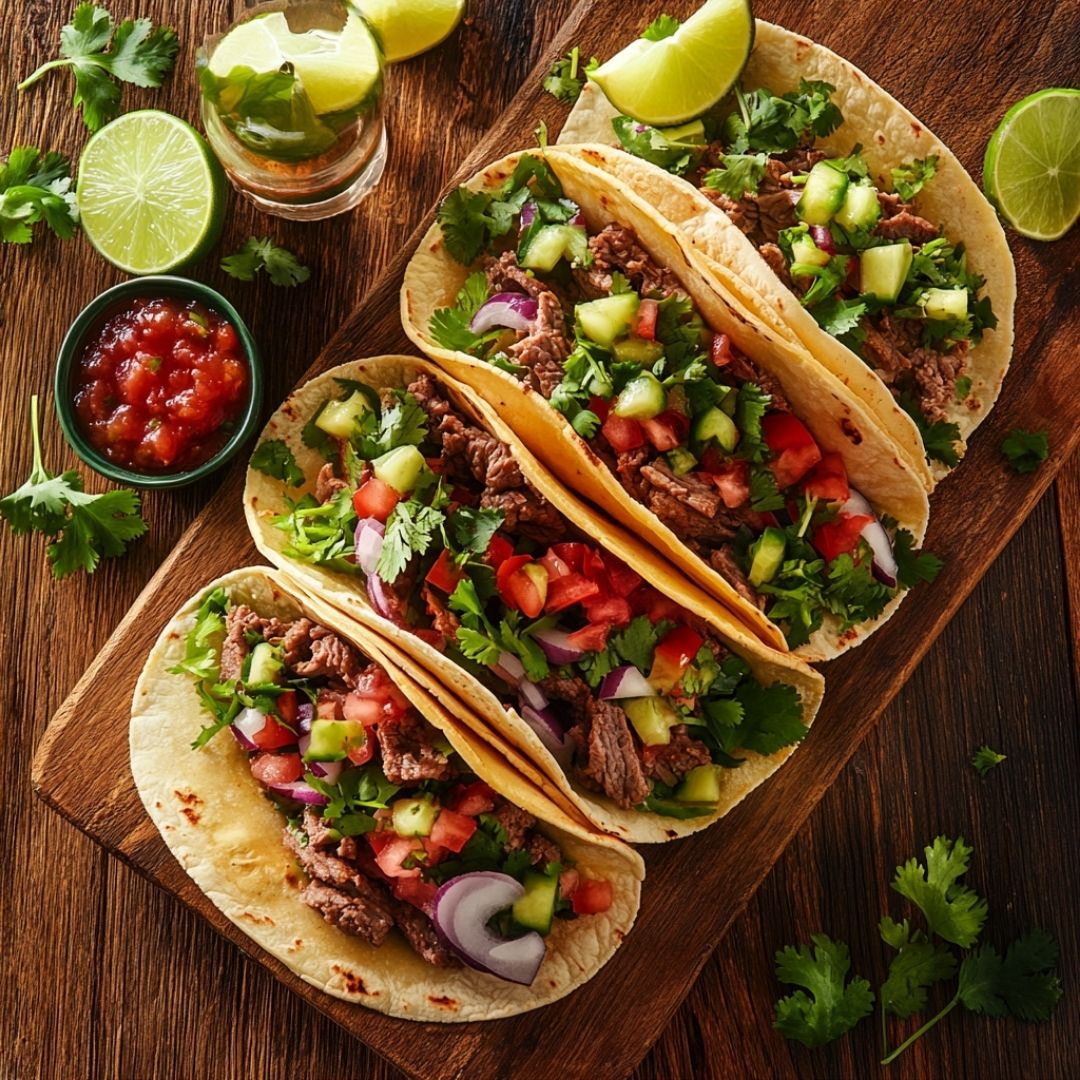
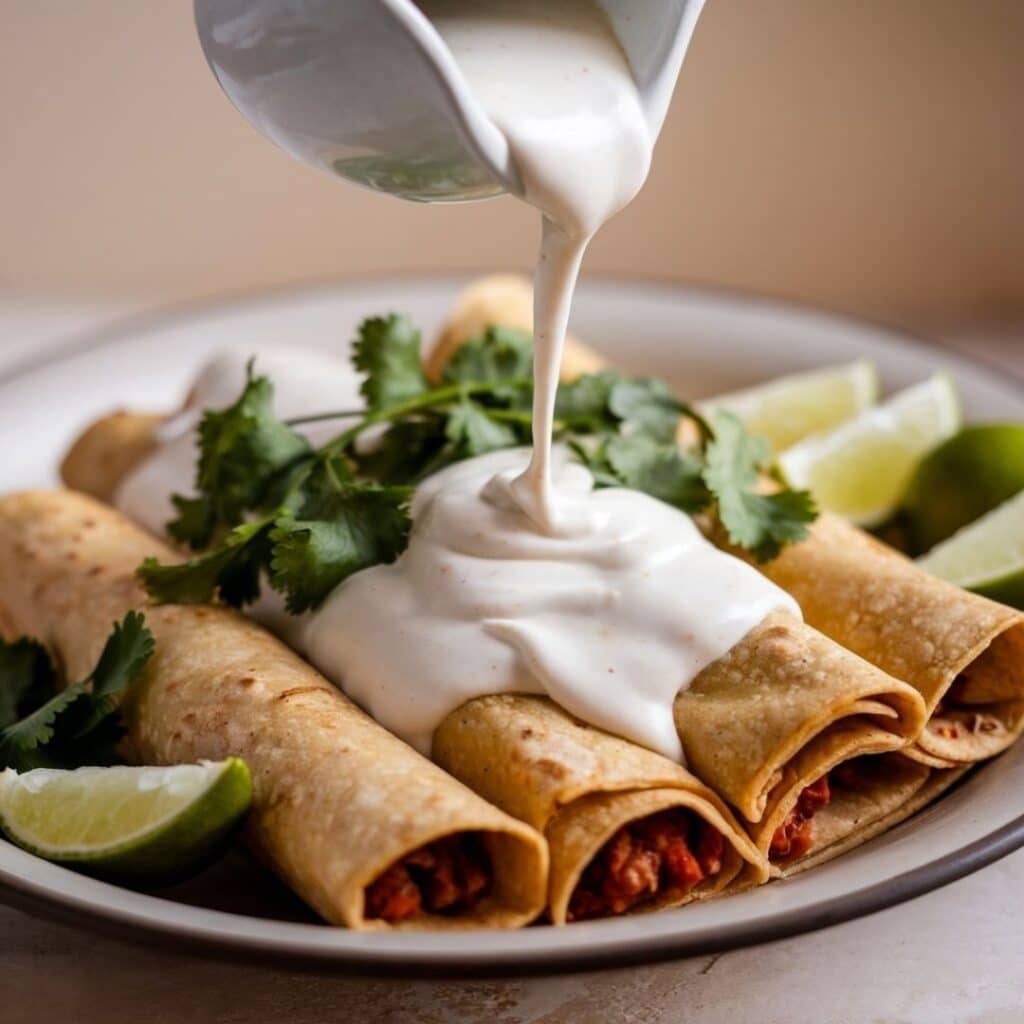
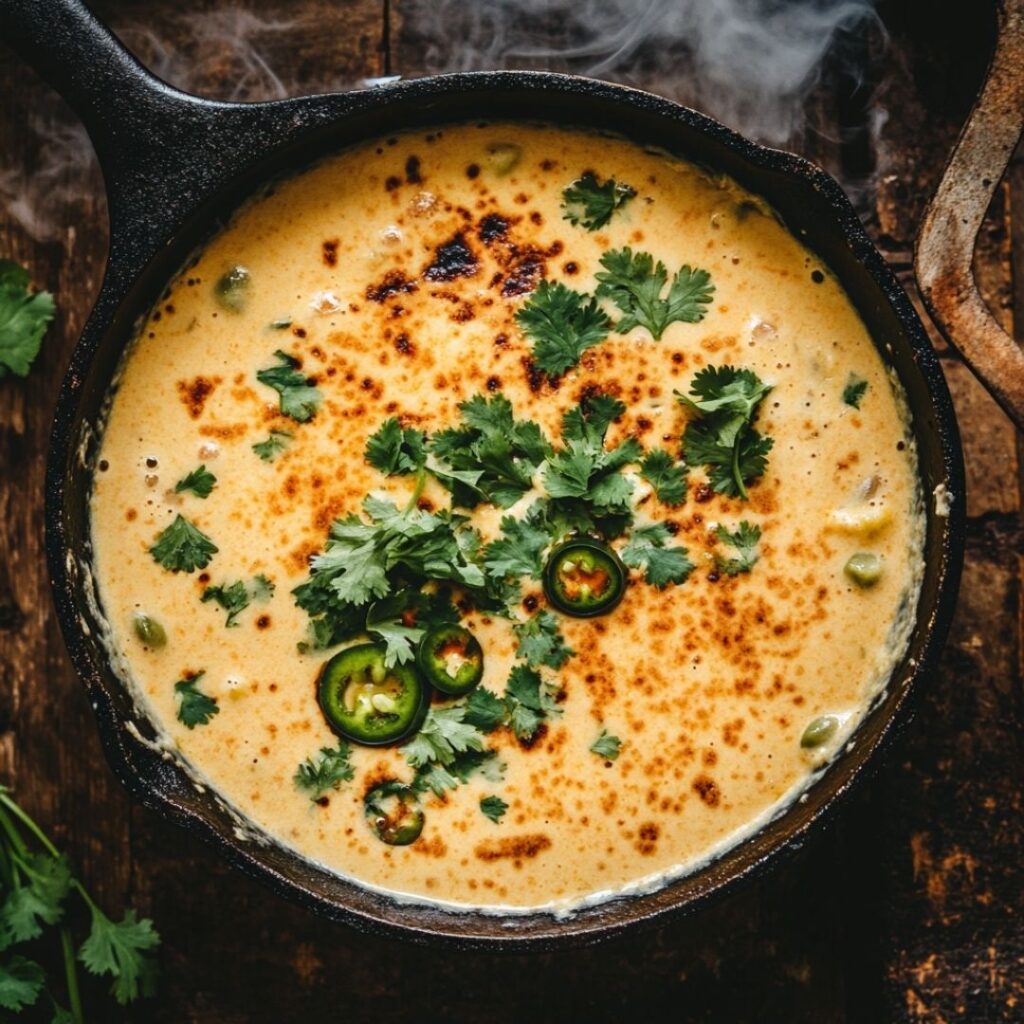
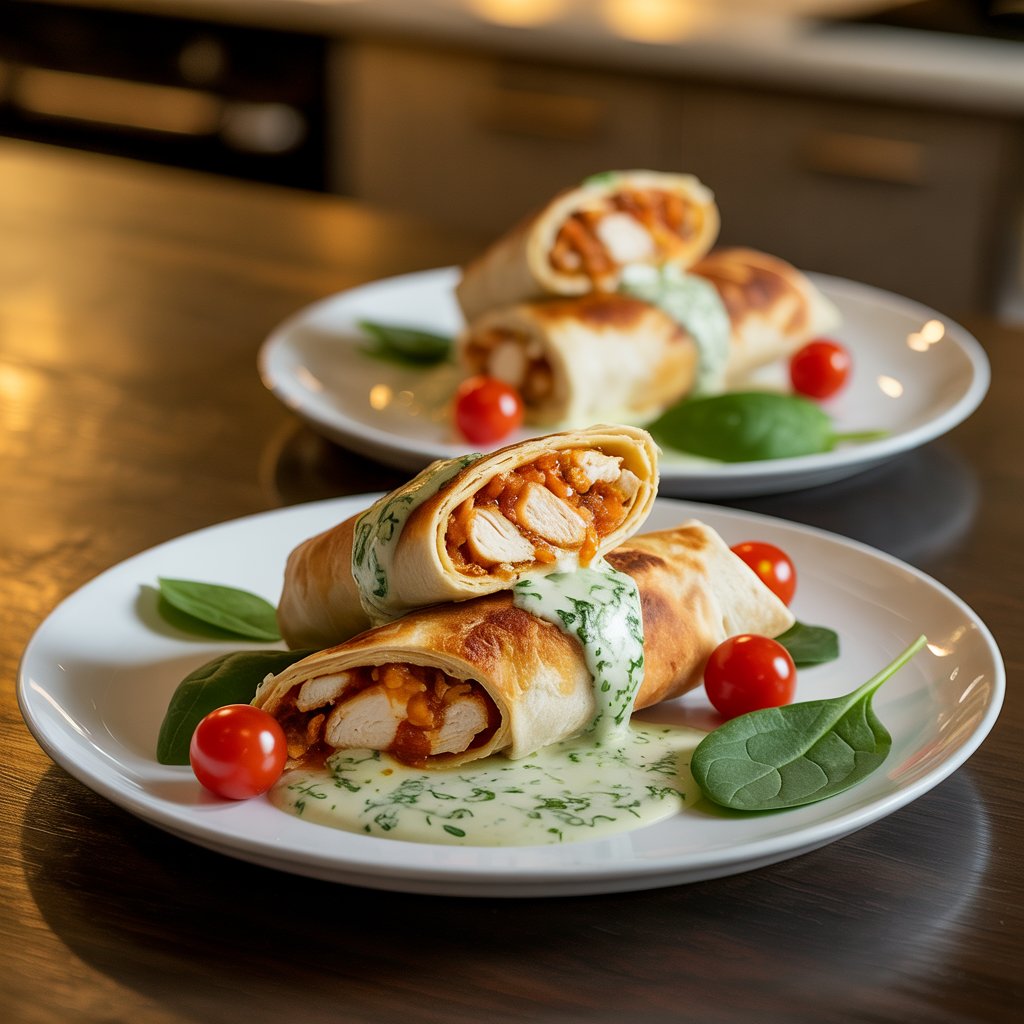
1 thought on “The Ultimate Guide to Mexican Cuisine”